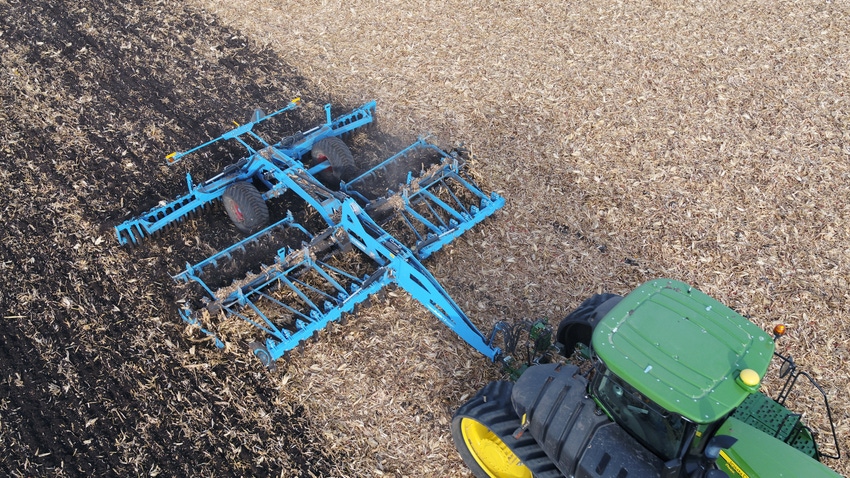March 22, 2018

Sponsored Content
From the moment the combine passes in the fall, to planting in the spring, corn residue management has a significant impact on the following crop’s stand and yield. If residue is properly chopped, sized and mixed immediately after harvest, the dense organic matter has more time to decompose and reintroduce valuable nutrients — including nitrogen, phosphorus and potassium — into the soil for the following season’s crop. If residue is not managed effectively, it can show in the form of stunted and uneven growth the following year.
The recipe for comprehensive residue management includes cutting deep, sizing materials evenly and reincorporating them thoroughly. By starting early and mixing deeper, growers can increase the rate at which corn stalks and roots are broken down.
To improve residue reincorporation, more farmers are using high-speed discs with deep mixing depths to increase the amount of soil being worked while decreasing time in the field.
The Lemken Rubin 12 makes residue management easy by digging deep with the largest diameter discs and most aggressive dual cutting angle of any compact disc on the market. At 29 inches, its serrated discs provide more complete and even residue incorporation, and with a constant working depth as deep as 8 inches, the Rubin 12 can operate in conditions previously reserved for cultivators. A high operating speed and special disc arrangement further improve soil mixing.
Behind the first row of discs, an impact harrow produces intensive mixing and crumbling, while integrated leveling tines behind the second row distribute and optimally level the soil. Additionally, the Rubin 12 features single-disc holding arms — as opposed to having two discs per arm — making it more tolerant of both wet and dry conditions.
With the capability to work a wide range of soil conditions, growers experience optimal penetration in even challenging soil conditions and spend less time waiting for fields to dry in the spring. When used for secondary tillage and seedbed prep in the spring, the Rubin 12 can be equipped with Lemken rollers, which are ideally suited for crumbling, reconsolidation and leveling.
The overall result is better incorporation of residue, more control over planting times and higher yields — all with fewer passes.
Visit lemken.com for more information.
About the Author(s)
You May Also Like




